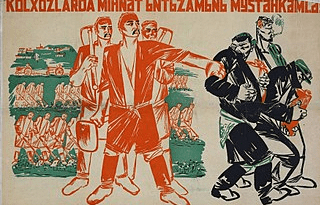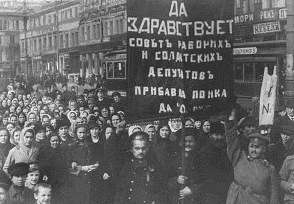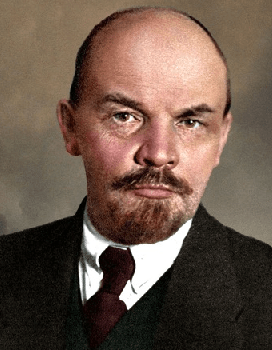Class 9 History Chapter 2 Question Answers - Socialism in Europe and the Russian Revolution
Q1. Explain the main effects of the First World War on the industries in Russia.
Ans: Main Effects of the First World War on Russian Industries
- Russian industries were limited during World War I due to a lack of diversity, and the country faced isolation from other industrial suppliers because of German dominance over the Baltic Sea.
- Industrial equipment deteriorated at a faster rate in Russia compared to other European nations.
- By 1916, the railway infrastructure in Russia started to deteriorate, aggravated by the conscription of able-bodied men into the war effort.
- Due to the labor shortages caused by conscription, several small workshops that produced essential goods were forced to close down.
- A significant amount of grain was redirected to feed the army, leading to shortages of bread and flour in urban areas.
- By the winter of 1916, bread riots became a common occurrence in cities due to the scarcity of essential food items.
Q2. What were the immediate consequences of the Russian Revolution? (CBSE 2010)
OR
What were the impacts of the Russian Revolution on Russia?
Ans: The Russian Revolution led to significant changes in Russia:
- End of Monarchy: The revolution marked the end of the autocratic monarchy, transforming the Tsarist empire into the Union of Soviet Socialist Republics (USSR).
- Socialist Government: One of the significant outcomes of the Bolshevik Revolution was the establishment of a Socialist Government, where all means of production came under state control. This included banks, mines, factories, railways, telephones, and more, all of which were declared as government property.
- Nationalisation: Properties belonging to the Church were nationalised, and work became mandatory for all citizens. Those who did not work were deprived of voting rights.
- Response to War: Before the revolution, the Russian population faced dire conditions exacerbated by World War I. The primary concern for the people was securing food rather than territorial expansion.
- Industrial Growth: After the revolution, the government nationalised both small and large industries, leading to rapid industrialisation.
- Reduction of Poverty: The growth of industrial and agricultural sectors contributed to a decrease in poverty, paving the way for national prosperity.
Q3. Discuss the causes that led to the Revolution of 1917.
OR
Describe the circumstances which were responsible for Russian Revolution.
Ans: The circumstances that led to the Russian Revolution included:
- Poor living conditions: The Russian peasantry was in a miserable condition. The farmers could not get even two square meals a day. Their land holdings were very small and they had to pay heavy taxes.
- Worker exploitation: The Russian as well as the foreign capitalist industrialists exploited the workers by taking 12-14 hours of work and paying very low wages to them. The workers had no right to form trade unions or seek reforms. They led a miserable life.
- Autocratic rule: Tsar Nicholas II was a despotic ruler with absolute power. He enjoyed unlimited powers and rights. The people of the higher strata enjoyed great privileges. The bureaucracy was corrupt and inefficient. The common people who suffered most, were fed up with the absolute rule of the Tsar and wanted to get rid of him.
- Desire for change: The widespread discontent among the populace, particularly the suffering common people, led to a strong desire to overthrow the Tsar.
- Influence of Marxism: Karl Marx propagated ‘Scientific Socialism’. He strongly opposed capitalism which meant untold exploitation of the common men.
Q4. Discuss Stalin’s collectivisation programme.
OR
What was Collectivisation? How did Stalin use this programme?
Ans: Stalin's collectivisation programme aimed to address grain shortages in Soviet Russia by consolidating small farms into large collective farms known as kolkhoz.
- Beginning in 1929, the government forced peasants to join collective farms.
- Land and farming tools were transferred to these collective farms, with profits shared among the peasants.
- Many peasants resisted, leading to a significant decline in livestock; the number of cattle dropped by one-third between 1929 and 1931.
- Those who opposed collectivisation faced severe punishment, including exile and deportation.
- Peasants argued they were not wealthy and supported socialism, but opposed collectivisation for various reasons.
- Some independent farming was allowed, but these farmers received little support from the government.
- Despite these efforts, agricultural production did not improve immediately, and poor harvests from 1930 to 1933 resulted in a devastating famine, causing over 4 million deaths.
 Collectivization in Russia
Collectivization in Russia
Q5. Explain how a society, according to socialists, can operate without property. What would be the basis of socialist society?
Ans: Socialists believe that a society can function without private property by focusing on collective ownership and cooperation. Here are key ideas:
- Cooperatives: Robert Owen, an influential English manufacturer, envisioned the establishment of a cooperative community known as New Harmony in Indiana, USA.
- Government Support: Some socialists, like Louis Blanc in France, argued that the government should promote cooperatives to replace capitalist businesses.
- Collective Production: Cooperatives are formed by individuals working together, sharing profits based on their contributions.
- Marx's Perspective: Karl Marx highlighted that in a capitalist society, factory owners profit from workers' labour. He believed that workers must overthrow capitalism and establish a society where all property is collectively owned, leading to a communist society.
- Second International: In the 1870s, socialists united to coordinate their efforts through the Second International, advocating for workers' rights and better living conditions.
In summary, socialists envision a society where property is owned collectively, ensuring that the focus is on the welfare of all rather than individual profit.

Q6. How did socialism spread in Europe?
Ans: Socialism spread in Europe through a mix of influential thinkers, practical experiments, and political activism:
- Intellectual Advocacy: By the mid-19th century, socialism emerged as a significant ideology. Socialists critiqued private property as a cause of social inequality, advocating for societal control of property to benefit the collective. Key figures like Karl Marx and Friedrich Engels promoted revolutionary change to establish a communist society.
- Cooperative Experiments: Socialists explored models for a society without private property. For instance, Robert Owen founded a cooperative community in New Harmony, Indiana. Others, like Louis Blanc, called for government-backed cooperatives to replace capitalist enterprises, aiming to share profits based on individual contributions.
- Political Mobilization: By the 1870s, socialist ideas gained momentum, leading to the formation of the Second International to unify socialist efforts across Europe. Workers' associations in England and Germany campaigned for better conditions, reduced hours, and voting rights.
- Formation of Political Parties: Socialists established political parties to promote their goals. In Germany, they supported the Social Democratic Party (SPD), while in Britain, they helped create the Labour Party, and in France, the Socialist Party emerged.
- Legislative Influence: Although socialists did not form governments in Europe before 1914, their ideas influenced legislation and public discourse. Conservative, liberal, and radical parties continued to dominate, but socialist principles shaped many political debates.
Q7. Discuss the role and importance of Lenin in the history of the USSR.
OR
Examine the role of Lenin in the Russian Revolution.
 Vladimir Lenin
Vladimir Lenin
Ans:
- In April 1917, the Bolshevik leader Vladimir Lenin returned to Russia from exile. He said it was time for the Soviets to take overpower.
- He declared that the war is brought to a close, the land is transferred to peasants, banks are nationalized. These three demands were Lenin’s ‘April Theses’.
- He argued that Bolshevik Party is renamed the Communist Party. In January 1918, Lenin dismissed the Constituent Assembly.
- There was only one party — the All Russian Congress of Soviets. It also became the Parliament of the country. The secret police OGPU and NKVD punished those who criticised the Bolsheviks.
- By 1920, the Bolsheviks controlled most of the former empire.
- The Bolsheviks created the USSR from the Russian Empire in December 1922.
Q8. What were the social, economic, and political conditions in Russia before 1905?
Ans: Social Conditions
- Russia had a diverse population, including various social statuses, classes, religions, and nationalities.
- The Russian language was imposed, undermining local cultures.
- Main groups included farmers, workers, landowners, capitalists, industrialists, and traders.
Economic Conditions
- Approximately 85% of Russians were engaged in agriculture.
- Agriculture was the primary source of employment, supplying food for both the market and personal needs.
Political Conditions
- Nobles gained power through their loyalty to the Tsar, rather than local support.
- Unlike in France, where peasants respected nobles, Russian peasants sought to take land from the nobles.
- Many peasants refused to pay rent and some resorted to violence against landlords.
Q9. In what ways was the working population in Russia different from other countries in Europe, before 1917?
Ans: Before 1917, the working population in Russia was notably different from that in other European countries due to several factors:
- Social Divisions: Workers were a divided group, with some maintaining strong ties to their villages, while others settled permanently in cities.
- Skill Disparity: Workers were categorised by skill level. For example, metalworkers viewed themselves as the elite among workers due to their specialised training.
- Strikes: Despite their divisions, workers often united to strike against employers over issues like dismissals and working conditions, particularly in the textile and metal industries.
- Peasant Relations: Peasants, like workers, were also divided but had little respect for the nobility. They sought to claim noble lands, often refusing to pay rent and sometimes resorting to violence against landlords.
- Land Ownership: Unlike many European countries, Russian peasants periodically pooled their land in communes (mir) and redistributed it based on family needs.
These characteristics contributed to a unique social landscape in pre-revolutionary Russia.
Q10. What were the main changes brought about by the Bolsheviks immediately after the October Revolution?
Ans: Main Changes After the October Revolution:
- Nationalisation: Most industries and banks were taken over by the government, meaning they became state-owned and managed.
- Land Reforms: Land was declared social property, allowing peasants to seize land from the nobility.
- Housing Regulations: In cities, large houses were divided according to family needs.
- Abolition of Titles: The use of old aristocratic titles was prohibited.
- Uniforms: New uniforms were created for the army and officials, including the iconic Soviet hat.
- Party Renaming: The Bolshevik Party was renamed the Russian Communist Party.
- One-Party State: Russia became a one-party state, with the Bolsheviks as the sole political party.
- Secret Police: The OGPU and NKVD were established to punish critics of the Bolsheviks.
Q11. Comment on the global influence of the Russian Revolution.
OR
What were the international consequences of the Russian Revolution?
Ans: Global influence of the Russian Revolution are as follows:
- Existing socialist parties in Europe did not wholly approve of the way the Bolsheviks took power and kept it.
- Still, the possibility of a workers’ state fired their imagination across the world. In many countries, communist parties were formed.
- Bolsheviks encouraged colonial people to follow their example. Many non-Russians received education in the USSR’s communist University of the Peoples of the East.
- By the time the Second World War broke out, the USSR had given socialism a global face and world stature.
Q12. How did Russia's participation in the World War cause the fall of the Tsar?
Ans: The war initially garnered support for Tsar Nicholas II, but as it dragged on, his popularity waned. Key factors contributing to the Tsar's downfall included:
- Anti-German sentiments grew, especially against the Tsarina Alexandra, who had German roots.
- The influence of poor advisers, notably the monk Rasputin, further discredited the autocracy.
- Military defeats were shocking and demoralising, with Russia suffering over 7 million casualties by 1917.
- Destruction caused by retreating armies led to over 3 million refugees and widespread discontent.
The war severely impacted industry:
- Many factories producing essential goods shut down due to labour shortages.
- Large quantities of grain were diverted to feed the army, causing bread shortages in cities.
- By winter 1916, riots over food became common.
As the situation deteriorated, public support for the Tsar diminished, leading to the collapse of his regime.
Q13. What were the immediate consequences of the Russian Revolution?

Ans: The immediate consequences of the Russian Revolution included significant upheaval within the military and society:
- The Russian army began to break apart as the Bolsheviks ordered land redistribution.
- Many soldiers, primarily peasants, deserted to return home for land.
- Opposition arose from Bolshevik Socialists, Liberals, and supporters of autocracy, who organised troops to combat the Bolsheviks.
- During 1918 and 1919, the 'greens' (Socialist Revolutionaries) and 'whites' (pro-Tsarists) controlled much of the Russian Empire.
- These groups received support from foreign troops, including those from France, America, Britain, and Japan, concerned about the rise of socialism.
- A civil war ensued, leading to widespread looting, banditry, and famine.
- Supporters of private property among the 'whites' took harsh actions against peasants who had seized land, resulting in a loss of popular support.
- By January 1920, the Bolsheviks had gained control over most of the former Russian Empire.
Q14. What was Bloody Sunday?
Or
Describe the incident known as ‘Bloody Sunday’? State any two events after the Bloody Sunday which led to the revolution of 1905 in Russia.
Ans:
- On Sunday, 22nd January, 1905, workers led by Father Gapon in Russia marched to the winter palace of the Tsar to present a petition.
- Tragically, they were met with indiscriminate firing by the police and cossacks, resulting in the deaths of over 100 workers and injuries to 300 more.
- This event marked the beginning of what would be known as the 1905 Revolution, with this tragic incident being referred to as 'Bloody Sunday' in Russian history.
Consequences of Bloody Sunday:
- The news of Bloody Sunday sparked widespread unrest across Russia, leading to strikes occurring nationwide.
- Universities in Russia were shut down as students protested the government's suppression of civil liberties.
- Professionals such as lawyers, doctors, engineers, and middle-class workers formed the Union of Unions, demanding a constituent assembly.
Q15. Describe the main events of the October Revolution in Russia.
Ans: On 16 October 1917, Lenin persuaded the Petrograd Soviet and the Bolshevik Party to support a socialist seizure of power. A Military Revolutionary Committee was formed, led by Leon Trotskii, to organise the uprising, which was kept secret.
The uprising began on 24 October. Prime Minister Kerenskii had left the city to gather troops. At dawn, government loyalists seized two Bolshevik newspapers. Pro-government forces attempted to take over telephone and telegraph offices and protect the Winter Palace.
In response, the Military Revolutionary Committee instructed its supporters to:
- Seize government offices
- Arrest ministers
Later that day, the ship Aurora shelled the Winter Palace, and other vessels captured military points. By nightfall, the city was under the committee's control, and the ministers surrendered. The All Russian Congress of Soviets in Petrograd endorsed the Bolshevik actions.
Uprisings also occurred in other cities, with significant fighting in Moscow. By December, the Bolsheviks had established control over the Moscow-Petrograd area.
|
55 videos|525 docs|78 tests
|
FAQs on Class 9 History Chapter 2 Question Answers - Socialism in Europe and the Russian Revolution
| 1. What were the main principles of socialism that emerged in Europe during the 19th century? |  |
| 2. How did the Russian Revolution of 1917 impact the spread of socialism in Europe? |  |
| 3. What role did the working class play in the rise of socialism in Europe? |  |
| 4. What were the key differences between socialism and communism as seen in the context of the Russian Revolution? |  |
| 5. What were the consequences of the Russian Revolution for European politics in the 20th century? |  |






















